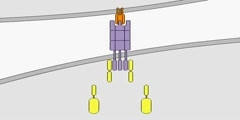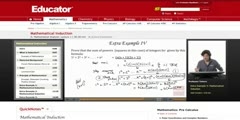Lec 14 - Backward induction: commitment, spies, and first-mover advantages
Game Theory (ECON 159) We first apply our big idea--backward induction--to analyze quantity competition between firms when play is sequential, the Stackelberg model. We do this twice: first using intuition and then using calculus. We learn that this game has a first-mover advantage, and that it comes commitment and from information in the game rather than the timing per se. We notice that in some games having more information can hurt you if other players know you will have that information and hence alter their behavior. Finally, we show that, contrary to myth, many games do not have first-mover advantages. 00:00 - Chapter 1. Sequential Games: First Mover Advantage in the Stackelberg Model 38:13 - Chapter 2. First Mover Advantage: Commitment Strategy 49:25 - Chapter 3. First Mover Advantage: Why It Is Not Always an Advantage 55:53 - Chapter 4. First and Second Mover Advantage: NIM Complete course materials are available at the Open Yale Courses website: http://open.yale.edu/courses This course was recorded in Fall 2007.
Video is embedded from external source so embedding is not available.
Video is embedded from external source so download is not available.
Channels: Others
Tags: Backward induction Cournot duopoly Extensive form games First Mover Advantage Nash equilbrium Sequential Stackelberg
Uploaded by: yalegametheory ( Send Message ) on 01-09-2012.
Duration: 67m 7s
Here is the next lecture for this course
Lec 15 - Backward induction: chess, strat ...
01:12:39 | 3492 viewsLec 13 - Sequential games: moral hazard, ...
01:10:33 | 3149 viewsLec 16 - Backward induction: reputation a ...
01:15:41 | 2715 viewsLec 17 - Backward induction: ultimatums a ...
01:10:45 | 3356 viewsLec 16 - Backward Induction and Optimal S ...
01:19:14 | 2548 viewsLec 18 - Imperfect information: informati ...
01:15:58 | 3377 viewsLec 19 - Subgame perfect equilibrium: mat ...
01:17:09 | 3027 viewsLec 6 - Nash equilibrium: dating and Cournot
01:12:06 | 3656 viewsFaraday's Law of Induction
02:11 | 19095 viewsPhysics Lab Demo 2: Electrostatic Induction
01:16 | 12514 viewsElectromagnetism 6_ Induction
09:16 | 6454 viewsApoptosis Induction
01:51 | 11280 viewsWhat is Mathematical Induction?
09:08 | 4452 viewsScience Catalyst live show_ Physics, Elec ...
07:31 | 7588 viewsNo content is added to this lecture.
This video is a part of a lecture series from of Yale
Lecture list for this course
Lec 1 - Introduction: five first lessons
Lec 2 - Putting yourselves into other people's shoes
Lec 3 - Iterative deletion and the median-voter theorem
Lec 4 - Best responses in soccer and business partnerships
Lec 5 - Nash equilibrium: bad fashion and bank runs
Lec 6 - Nash equilibrium: dating and Cournot
Lec 7 - Nash equilibrium: shopping, standing and voting on a line
Lec 8 - Nash equilibrium: location, segregation and randomization
Lec 9 - Mixed strategies in theory and tennis
Lec 10 - Mixed strategies in baseball, dating and paying your taxes
Lec 11 - Evolutionary stability: cooperation, mutation, and equilibrium
Lec 12 - Evolutionary stability: social convention, aggression, and cycles
Lec 13 - Sequential games: moral hazard, incentives, and hungry lions
Lec 15 - Backward induction: chess, strategies, and credible threats
Lec 16 - Backward induction: reputation and duels
Lec 17 - Backward induction: ultimatums and bargaining
Lec 18 - Imperfect information: information sets and sub-game perfection
Lec 19 - Subgame perfect equilibrium: matchmaking and strategic investments
Lec 20 - Subgame perfect equilibrium: wars of attrition
Lec 21 - Repeated games: cooperation vs. the end game
Lec 22 - Repeated games: cheating, punishment, and outsourcing
Lec 23 - Asymmetric information: silence, signaling and suffering education
Lec 24- Asymmetric information: auctions and the winner's curse














